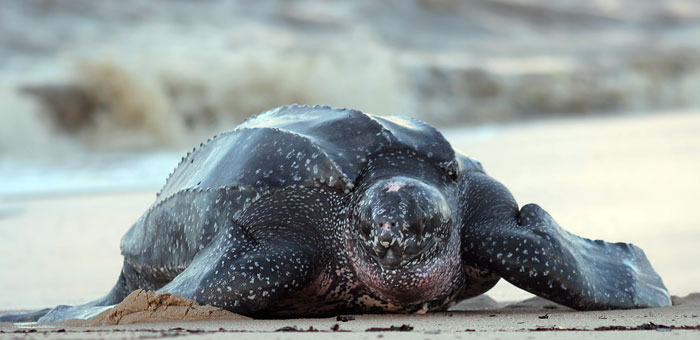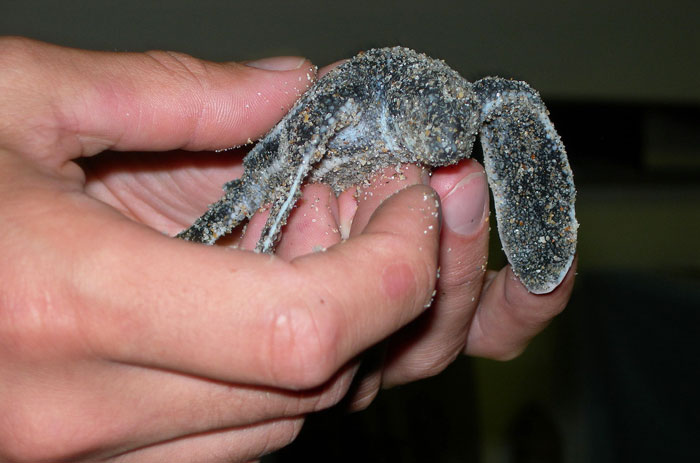Next time you’re out on the ocean, keep an eye out for a rare but welcome visitor to our waters – the leatherback turtle.
Leatherbacks sea turtles swim an amazing 6,000 miles from their nesting grounds in Indonesia to the West Coast every year, and they have been doing this for at least 150 million years, long before the extinction of the dinosaurs. This year, one of the rare and endangered turtles has arrived to the California coastline earlier than usual. On Sunday, July 12, one was spotted by a boater midway between San Francisco and the Farallon Islands, about a month earlier than normal. While it’s a good sign that a leatherback has been spotted, the encounter is a rare one among the declining number of leatherbacks still believed to be in existence.
A 2013 study found that the Western Pacific population of leatherback sea turtles, which includes the leatherbacks that feed in West Coast waters, has continued to decline since the 1980s. In 1982, there were about 115,000 adult female leatherbacks in the world, and 14 years after that, studies found only about 34,500 remained. A report from the Ecological Society of America shows the population of leatherback sea turtles in west coast waters could become extinct over the next 20 years. The species has been considered endangered since 1970.
Leatherbacks typically arrive back to California in mid-August to feed on jellyfish. In their pursuit of prey, they can dive as deep as 4,000 feet. The only animals to dive deeper than that are sperm whales, beaked whales, and elephant seals, SeeTurtles reports.
Due to their decline in numbers, the federal government established the Pacific Leatherback Conservation Area in 2012, which prohibits drift gill net fishing between Aug. 15 and Nov. 15 along California from Point Sur north, an area of almost 16,000 square miles.
And how do they find their way with such a long migration? Scientists believe that magnetite crystals, found in the brains of these ocean travelers, play a key role in helping them navigate. The magnetite acts like a compass, allowing them to use the earth’s magnetic fields to make their way over long distances. This enables them to locate feeding grounds and nesting grounds.
The Pacific leatherback sea turtle is the official state marine reptile for California.


